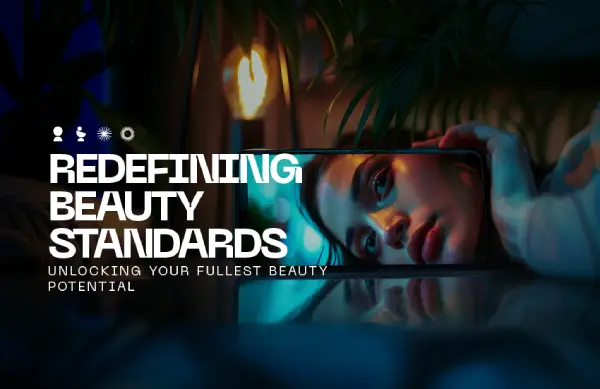Blog
Social Media Influence: How Filters and Facetune Contribute to Unrealistic Filler Expectations

Contents
The rise of digital enhancement
Filter frenzy and beauty standards
The domino effect on filler expectations
Real vs. altered: Bridging the gap
The role of education and transparency
Case studies and expert insights
Navigating the digital landscape
The lowdown on filters and fillers
For most people, social media is a huge part of everyday life. Platforms like Instagram, Facebook, TikTok, and Snapchat allow users to share updates about their lives, connect with family and friends, participate in online communities, and express opinions on current events.
Social media isn’t just about sharing personal moments anymore, though. It’s about crafting an online identity. The digital age has fostered a culture of constant self-presentation, influencing beauty standards and creating a breeding ground for unrealistic expectations.
Online tools erase flaws and accentuate features with a single tap, blurring the line between what’s real and what’s fantasy. It can be challenging to know the difference between a genuine picture and a digitally conjured one.
The allure of achieving a flawless look extends beyond the screen. Many people yearn to mirror the filtered perfection they encounter daily with cosmetic treatments like dermal fillers, but is this actually possible?
Keep reading for the full lowdown on the multifaceted relationship between social media, digital alterations, and filler expectations.
The rise of digital enhancement
The use of filters and apps like Facetune is synonymous with social media.
From flawless skin to augmented features, these tools allow users to present an idealized version of themselves. Gone are the days of basic filters, too. Now, you have an array of digital tricks at your fingertips to sharpen jawlines, plump lips, and smooth skin.
It’s easier than ever to snap a photo of yourself and make significant alterations. This phenomenon has led to a massive increase in digitally altered content. It’s created an environment where perfection seems not only attainable, but expected.
The evolution of digital enhancement tools has paralleled the rise of social media.
Initially, these programs were reserved for professional photographers, but they’re now available to anyone. The accessibility of these tools makes it easier to manipulate images, which contributes to the normalization of altered online content.
Social media is flooded with images of flawless skin and sculpted features. These altered pictures play a significant role in beauty standards. Users are exposed to a somewhat false reality that creates a disconnect between digital ideals and authentic appearances.
With every click and swipe, you’re bombarded by a curated world of beauty that seems too good to be true. These digitally enhanced images don’t just depict individuals: they project ideals.
Filter frenzy and beauty standards
The link between altered images and unrealistic beauty standards is undeniable. Filters often blur imperfections and enhance specific features, creating a visual narrative that promotes an unrealistic level of flawlessness.
This issue can impact self-esteem. It also sets the stage for distorted expectations when considering cosmetic procedures.
Facial features, like the lips and cheeks, are often emphasized in digitally altered content. The prevalence of plump lips and sculpted cheekbones in filtered images contributes to a narrow perception of beauty.
Over time, these features create a blueprint for beauty. It can push individuals to consider dermal fillers and other cosmetic treatments to replicate the filtered allure.
From Kylie Jenner’s iconic lips to Kim Kardashian’s sculpted cheeks, influencers and celebrities play a crucial role in perpetuating filtered beauty ideals.
Their curated online personas are often shaped by digital enhancements, contributing to the normalization of altered images. Edited pictures act as a double-edged sword, inspiring but also instilling a sense of inadequacy.
Many people look up to these figures, so the beauty standards they set fuel further unrealistic expectations.
The domino effect on filler expectations
The psychological impact of filtered images on those contemplating dermal fillers is profound.
Constant exposure to digitally altered perfection can result in a distorted self-image, as individuals aspire to match the unattainable beauty standards set by filtered content. It also affects expectations regarding the results of filler procedures.
There’s a clear correlation between edited content and heightened expectations for filler results. Some people may unconsciously internalize the flawless images they see on social media and expect the same outcome from dermal filler.
The discrepancy between digital ideals and reality often ends in dissatisfaction, perpetuating the cycle of unrealistic expectations.
Real-life examples emphasize the influence of social media on filler expectations. Some people bring pictures of heavily edited faces to their consultation, expressing a desire for features that may not be achievable through fillers alone.
These cases highlight the need for a nuanced understanding of social media’s impact on aesthetic expectations.
Real vs. altered: Bridging the gap
It’s vital to distinguish between digitally enhanced images and real-life pictures when considering fillers.
Although dermal fillers offer several benefits, they have limitations. They can enhance and restore volume, but they can’t replicate digitally altered features.
Understanding the limitations of cosmetic procedures is essential for setting realistic expectations. Practitioners should emphasize the need for open dialog and encourage patients to express their desires within the realm of achievable outcomes.
Embracing your unique features should be at the forefront of all aesthetic considerations.
The use of advanced imaging technology can simulate potential results and provide a more accurate representation of what can be achieved through dermal fillers.
The role of education and transparency
There’s a pressing need for transparent discussions about aesthetic procedures on social media. Influencers, practitioners, and online platforms should actively engage in conversations that demystify the cosmetic enhancement process.
Providing accurate information about the realities of dermal fillers can help people make informed decisions.
Influencers should disclose when their images are digitally altered. Practitioners must set realistic goals during consultations. Social media platforms can implement features that distinguish between filtered and unedited content.
Education plays a pivotal role in fostering a culture of authenticity. When people are armed with accurate data about aesthetic procedures, they can better navigate the digital landscape.
An informed person is more likely to make choices that align with their true desires, rather than succumbing to unrealistic ideals propagated by social media.
Case studies and expert insights
Real-life cases highlight the importance of addressing unrealistic expectations and guiding individuals towards more realistic outcomes. Sharing these stories serves as a powerful tool to illuminate the potential pitfalls associated with chasing digitally altered ideals.
One study explores the link between young adults’ perceptions of cosmetic procedures and their social media usage. Frequent use of highly visual platforms, like Instagram and TikTok, is associated with an increased intention to undergo cosmetic procedures.
Passive social media engagement, specifically following influencers who’ve had cosmetic procedures, correlates with higher acceptance and intention. Active engagement, such as using filters, is positively related to cosmetic procedure acceptance and intention.
A 2019 study found that spending longer hours on social media increased the likelihood of considering undergoing cosmetic procedures in the future.
Dermatologists, plastic surgeons, and mental health professionals offer valuable perspectives on the topic. Collaborative efforts between professionals are essential to mitigate the negative impact of unrealistic filler expectations.
Here are some challenges practitioners often face in managing patient expectations influenced by social media.
- Digital disconnect: Patients may bring in edited images, creating a disconnect between filtered ideals and realistic outcomes.
- Preconceived notions: Patients may go in with incorrect ideas of what fillers can offer, expecting results that go beyond the treatment’s capabilities.
- Homogenized beauty standards: Social media tends to perpetuate homogenized beauty standards. It can be tough for practitioners to navigate diverse expectations and emphasize individuality.
- Educational gaps: Some patients may lack accurate information about the limitations of dermal fillers. Practitioners need to bridge these gaps to ensure realistic goal setting.
- Pressure to replicate filters: Patients may ask practitioners to replicate specific features seen in filtered images, requiring delicate conversations around managing expectations.
Navigating the digital landscape
You can adopt various strategies to engage with online content more critically.
Developing media literacy skills to discern between filtered and unedited images is crucial. Actively seeking diverse representations of beauty and following accounts that promote authenticity can help create a more balanced digital experience.
Promoting self-acceptance and celebrating individuality is a countermeasure to the homogenized beauty standards online. Encouraging people to embrace their unique features fosters a culture that values authenticity over conformity.
A shift towards a more inclusive and diverse representation of beauty on social media is essential. Online platforms can play a major role in promoting authenticity by featuring a diverse range of individuals and content.
By showcasing real people with different appearances, social media can refine standards and inspire a more accepting and inclusive beauty culture.
The lowdown on filters and fillers
The pervasive influence of social media, coupled with the rise of digital enhancement tools, has significantly impacted aesthetic expectations, particularly regarding dermal fillers.
The gap between digitally altered ideals and real-life outcomes underscores the need for education, transparency, and a shift towards authenticity.
By navigating the digital landscape with a critical mindset, promoting self-acceptance, and advocating for realistic narratives, individuals can foster a more balanced and informed approach to aesthetic expectations.
Ongoing discussions on the influence of social media in the beauty industry are crucial for steering the narrative towards a healthier and more inclusive representation of beauty.
At LIVV Natural, we believe that embracing your unique features should be at the forefront of all aesthetic considerations. Book a consultation with our passionate practitioners to learn more.
Author: Dr. Jason Phan NMD – Founder of LIVV Natural – Anti-aging – regenerative medicine – peptide therapy


